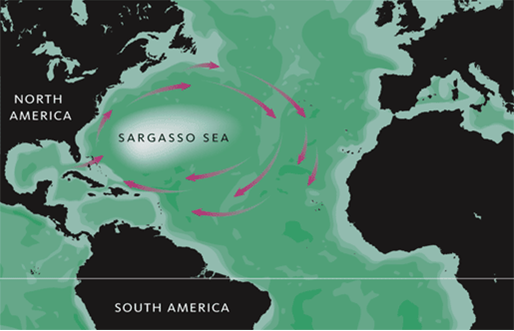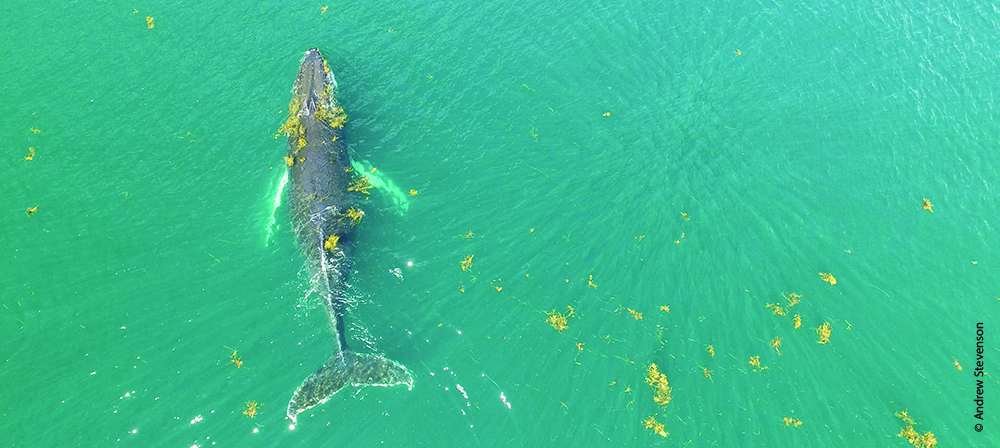Definition
Area contains either:
- unique (the only one of its kind), rare (occurs only in few locations) or endemic species, populations or communities, and/or
- unique, rare or distinct, habitats or ecosystems; and/or
- unique or unusual geomorphological or oceanographic features
Examples
Open ocean waters: Sargasso Sea, Taylor column, persistent polynyas
Deep-sea habitats: Endemic communities around submerged atolls, hydrothermal vents, sea mounts, pseudo-abyssal depressions
Case study: The Sargasso Sea
The Sargasso Sea is a globally unique marine ecosystem in which the entire water column provides a habitat, migratory route, spawning site and feeding ground to a multitude of species including endemic, endangered and commercially important ones. It is named after the species of drift seaweed Sargassum spp. that clusters in dense floating mats at the surface, creating habitat, shelter and food for countless other species. In other regions of the world this floating and ever-drifting habitat is rare and ephemeral, making the Sargasso Sea unique by its permanence.
The Sargasso Sea is contained within the prevailing currents that together form the North Atlantic Subtropical Gyre. Its western boundary is held in place by the Gulf Stream, its northern boundary by the North Atlantic Current, its eastern boundary by the Canary Current, and its southern boundary by the North Atlantic Equatorial Current. It is the only sea in the world without coastlines.

Many species have adapted to the unique habitat provided by floating Sargassum mats. For example, Sargassum provides habitat to the endemic Sargassum pipefish (Syngnathus pelagicus), Sargassum snail (Litiopa melanostoma), Sargassum angler fish (Histrio histrio), shrimp (Latreutes fucorum) and the Sargassum crab (Planes minutes). Many of these species have evolved their appearance to blend in with the seaweed for camouflage. Beyond this, many species of commercially important adult fish (e.g., tuna, dolphin, wahoo and billfish) associate regularly with Sargassum, as do several species of sea turtle and sea bird (e.g., shearwaters, tropic birds and boobies), which use the Sargassum for foraging and as roosting sites. Sargassum seaweed is crucial to the survival of hatchling and young hawksbill, green and loggerhead turtles, as the floating mats provide them with food and cover, increasing their chances of survival at a life stage when they are very vulnerable to predation. At the seabed, the Sargasso Sea is punctuated by several seamounts, which are known as an important deep-water fish species aggregating and spawning area.
The Sargasso Sea area was described by participants at the Regional EBSA Workshop for the Wider Caribbean and Western Mid-Atlantic, and designated as an EBSA at COP11 (Decision XI/17, Oct 2012).

Humpback whale (Megaptera novaeangliae) among sargassum in the Sargasso Sea

